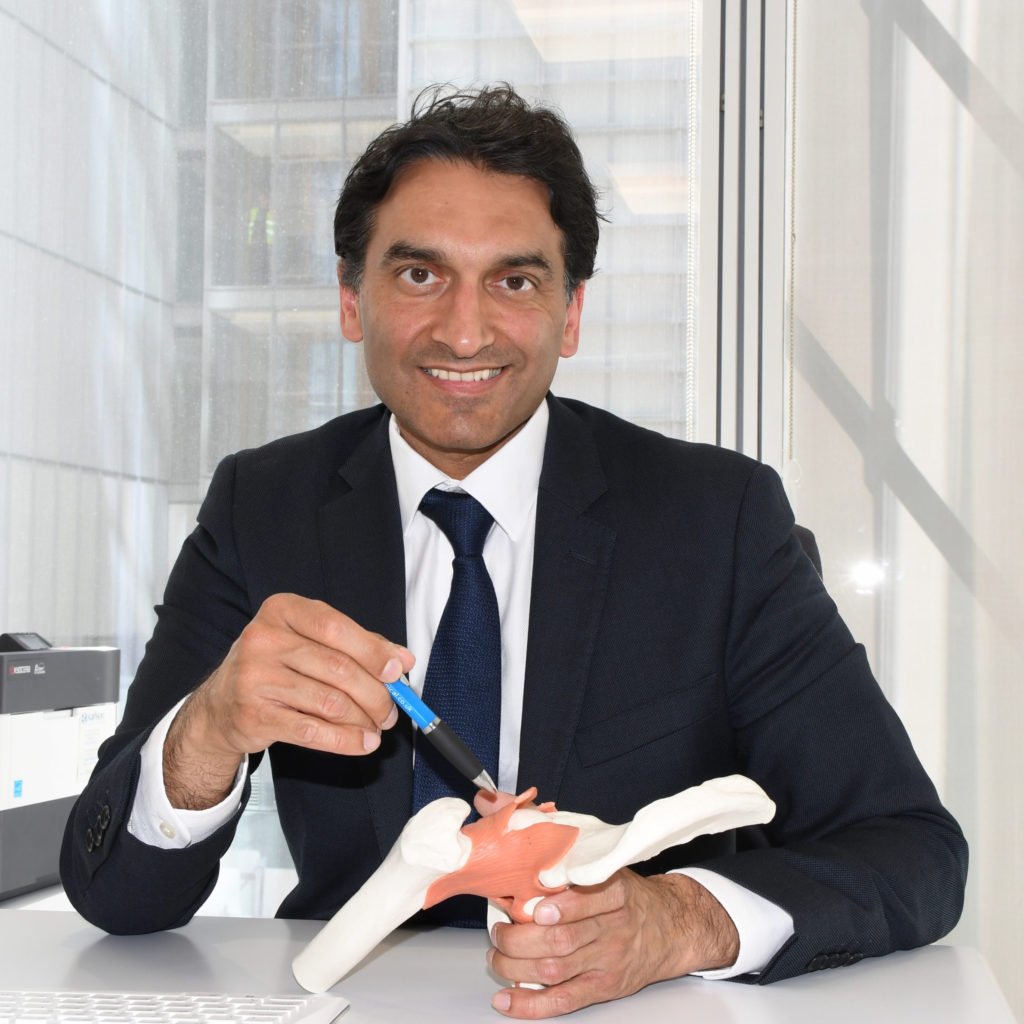
ORTHOPAEDIC OPINIONS BLOG
February 2023
What is the most common skiing injury?
She’s skiing down the slope carving turns, admiring the beautiful scenery of The Alps around her. Her technique is great. Others are enjoying the run too. Suddenly, the leading ski catches and she falls over. The knee twists and she hears a “pop” in her knee before she hits the ground. The knee swells afterwards and standing is difficult because of pain.
This is a scenario of an anterior cruciate ligament (ACL) injury happening. It is not a situation that anyone wants to imagine on a long-awaited ski holiday. But as we enter the ski season, it’s useful to know what to look out for before going skiing.
The knee is the most common area of the body to be injured when skiing, accounting for around one third of all skiing injuries. Anterior cruciate ligament (ACL) injuries are at the top of that list of the most likely structure to be injured in the knee [https://www.ncbi.nlm.nih.gov/pmc/articles/PMC8126542/].
We know that skiing puts a certain amount of pressure on the knees, but what makes ACL injuries so common for skiers? ACL injuries are more common in sports that “require athletes to make vigorous and repeated motions that work the ACL, putting it under stress as it continuously provides stability during stop-and-go action and pivoting motions.” [https://www.ortho.wustl.edu/content/Education/3635/Patient-Education/Educational-Materials/ACL-Tears.aspx]. Sudden turns or “cuts” or landing from a jump with a twisting motion can all cause ACL injuries.
So, what is the role of the anterior cruciate ligament (ACL) within the knee? In simple terms, the ACL is one of two ligaments inside the middle of the knee that cross over each other. The other ligament is the posterior cruciate ligament (PCL). Both ligaments attach on one side to the end of the thigh bone (femur) and on the other to the top of the shinbone (tibia) [https://www.hopkinsmedicine.org/health/conditions-and-diseases/acl-injury-or-tear].
The severity of damage to the ACL can range from being a sprain (stretched) but still able to provide adequate stability to the knee joint, to a complete ACL rupture. This means that the ACL is torn completely in half and is no longer providing any stability to the knee joint [https://www.hopkinsmedicine.org/health/conditions-and-diseases/acl-injury-or-tear]. It is common to see partial tears of the ACL. Sometime the knee remains stable and can be treated with rehabilitation. Other times the knee becomes unstable, requiring reconstruction or even, augmentation. This is where a reconstruction is performed alongside the remaining fibres of a partially torn anterior cruciate ligament.
It is common to see injuries to other structures within the knee joint. These include the other ligaments (including the collateral on the outside, PCL and posterolateral corner), the menisci (thought to work as shock-absorbers), patella (knee cap) or articular cartilage (the lining of the surface of the knee joint). It is also possible to get a fracture.
Treatment for an Anterior Cruciate Ligament Injury
What should you do if you sustain a knee injury and are unable to bear weight or have swelling afterwards, or other symptoms including instability/giving way or locking (being unable to fully straighten the knee)?
It is important to understand exactly what structures have been injured. The history of injury and mechanism, features on examination and investigations such as radiographs and a high resolution MRI scan can help a specialist diagnose and plan treatment with you.
Treatment is decided based on the type and pattern of injury, when the injury occurred and how it affects you and your sporting ambition.
If the knee is unstable following an ACL rupture and you wish to return to pivoting sports, you may consider proceeding with an ACL reconstruction.
Surgery for ACL Reconstruction
The principle of ACL reconstruction is to use key-hole surgery to replace the injured ligament. This is often done using another tendonous structure such as your hamstrings or patella from the same or opposite knee. This is known as autograft (allografts are tissues obtained from other sources).
The details of ACL reconstruction can be found here.
Although we don’t want to assume that an ACL injury will occur, it’s good to know what to look out for and to not ignore knee pain, instability and locking if you sustain an injury.

ABOUT THE AUTHOR
Mr Vipin Asopa, PhD, FRCS (Tr & Orth), MBChB, BSc (hons)
Mr Asopa is a Specialist Consultant Hip and Knee Surgeon in London, with a particular focus on hip pain, knee pain and sports injuries. Mr Asopa performs numerous surgical procedures including hip and knee joint replacements, arthroscopy as well as treating arthritis, ligament injuries, trochanteric pain and more.
To book an appointment with Mr Asopa:
Call: +44 (0) 794 319 1592 | Email: admin@ortho-surgery.uk